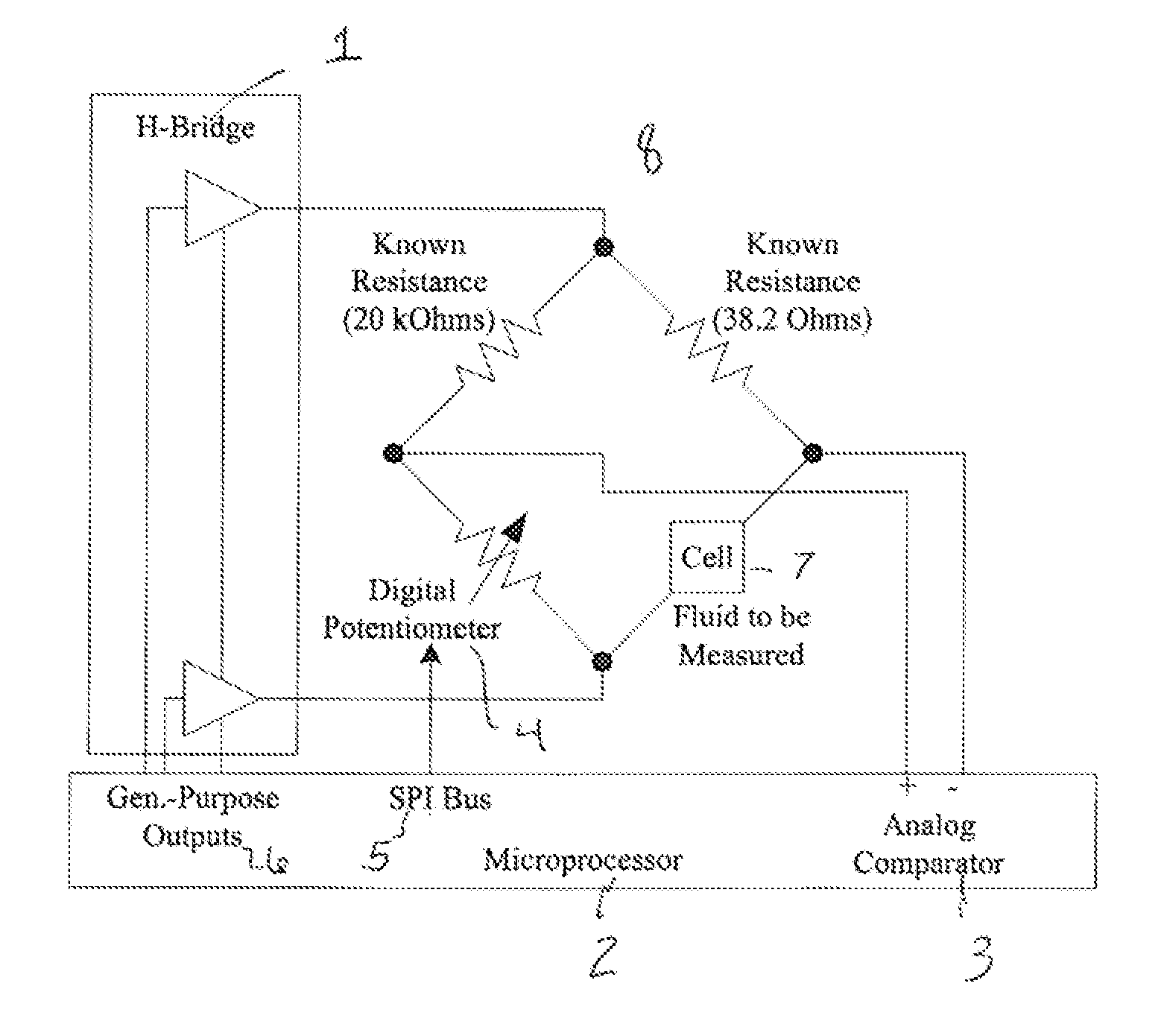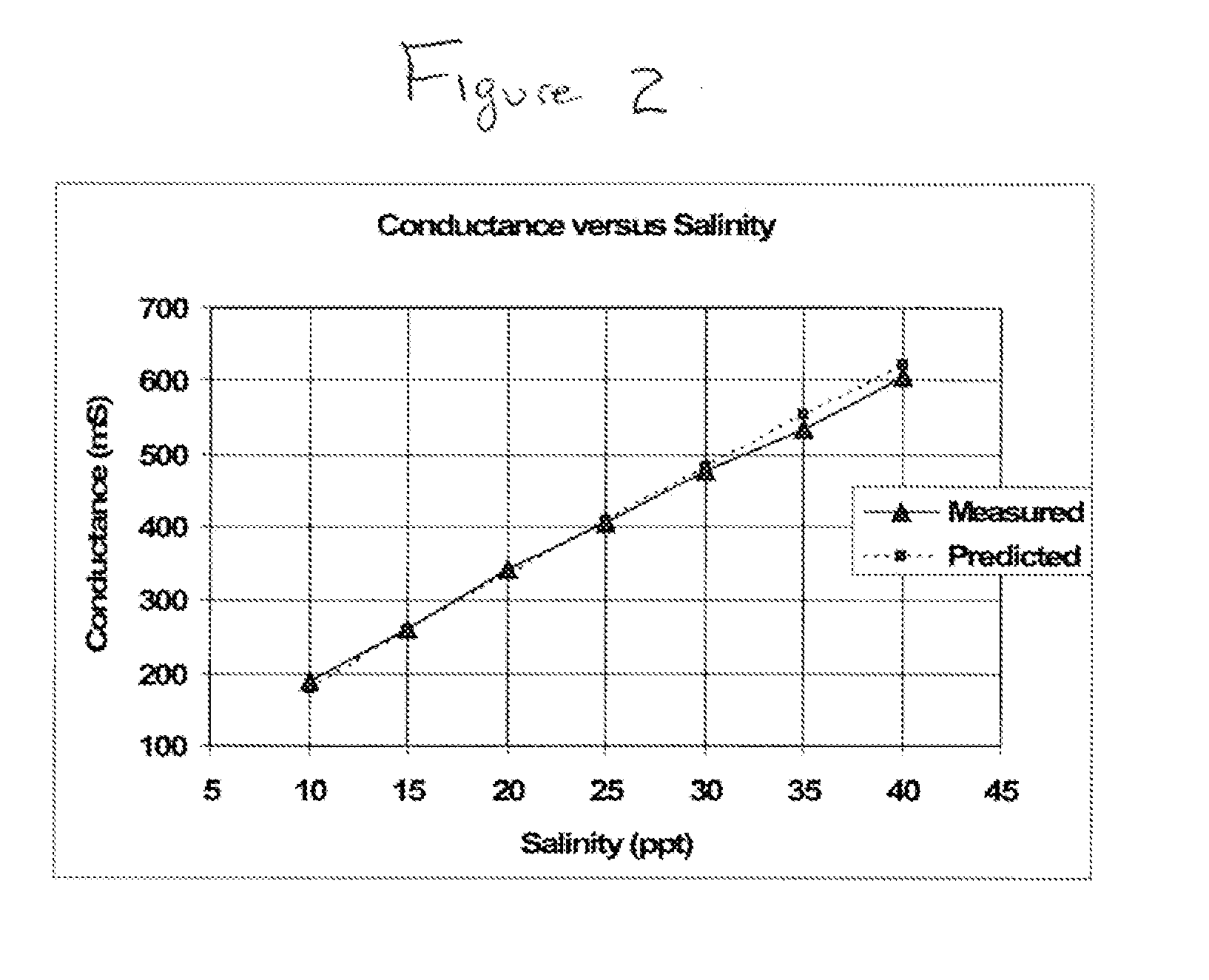Salinity sensor for embedded environmental monitoring
a technology of embedded environmental monitoring and salt water, which is applied in the direction of resistance/reactance/impedence, water testing, instruments, etc., can solve the problems of unsatisfactory satellite water level measurement, cloud cover, and floods that tend to happen under cloud cover, so as to reduce the number of output pins
- Summary
- Abstract
- Description
- Claims
- Application Information
AI Technical Summary
Benefits of technology
Problems solved by technology
Method used
Image
Examples
Embodiment Construction
[0032]Salt increases the conductivity of water by providing ions for the flow of electric current. Hence the salinity of water can be inferred from measuring the conductivity of a sample.
[0033]The measurement process uses a set of electrodes of known geometry and is usually calibrated ahead of time using solutions of known salinity. By calibrating the electrodes, the cell constant (the ratio of electrode spacing to electrode area) is calculated.
[0034]It is well known that the resistance, R, of a substance is calculated as follows.
R=ρlA,(1)
where ρ is the bulk resistivity of the material, l is the length of the material, and A is the area of the material. l / A, then, is the cell constant C which has units of reciprocal-length (e.g. cm−1 in CGS). In the case of a fluid, l and A are the spacing and area of the electrodes, respectively.
[0035]The conductivity of a fluid, G, is the reciprocal of the resistance and the bulk conductivity, σ, is the reciprocal of the bulk resistivity, and so (...
PUM
| Property | Measurement | Unit |
|---|---|---|
| resistance | aaaaa | aaaaa |
| resistances | aaaaa | aaaaa |
| polarity | aaaaa | aaaaa |
Abstract
Description
Claims
Application Information
 Login to View More
Login to View More - R&D
- Intellectual Property
- Life Sciences
- Materials
- Tech Scout
- Unparalleled Data Quality
- Higher Quality Content
- 60% Fewer Hallucinations
Browse by: Latest US Patents, China's latest patents, Technical Efficacy Thesaurus, Application Domain, Technology Topic, Popular Technical Reports.
© 2025 PatSnap. All rights reserved.Legal|Privacy policy|Modern Slavery Act Transparency Statement|Sitemap|About US| Contact US: help@patsnap.com



